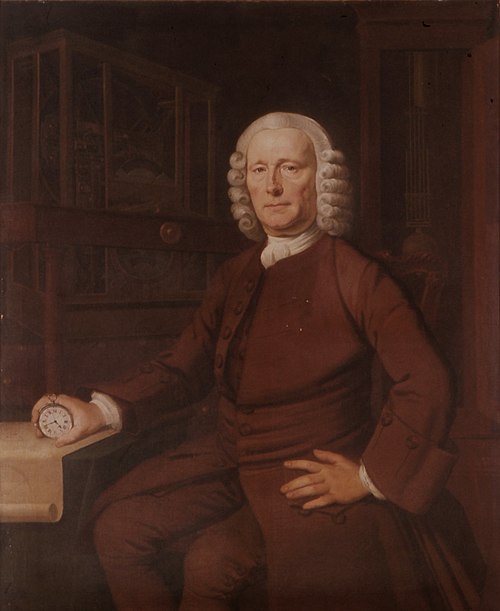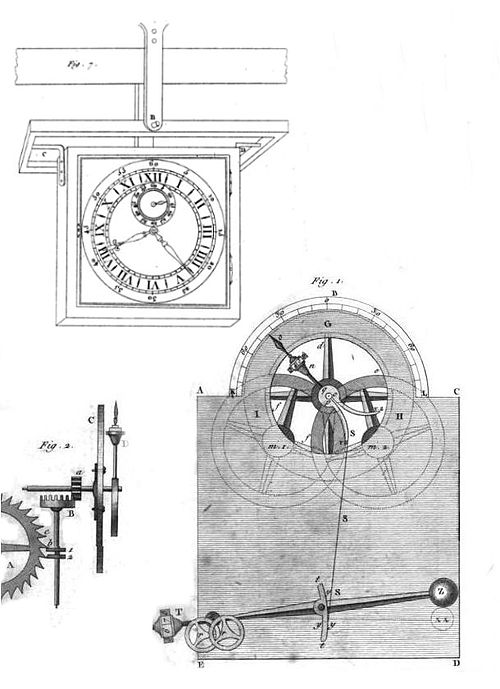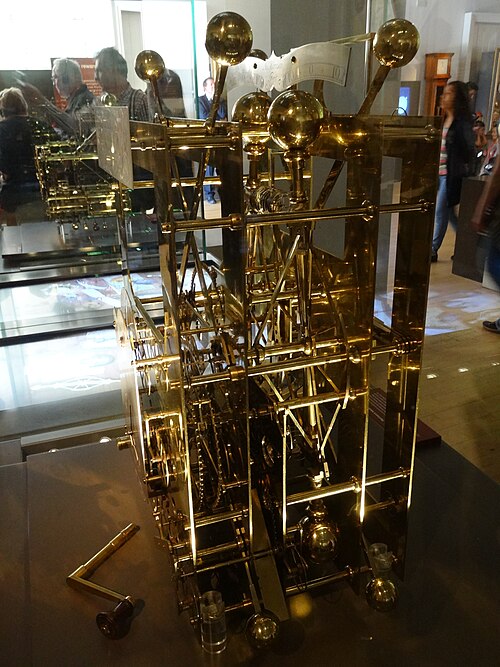John Harrison
Videos
Page
John Harrison was an English carpenter and clockmaker who invented the marine chronometer, a long-sought-after device for solving the problem of calculating longitude while at sea.

Thomas King's 1767 portrait of John Harrison, located at the Science and Society Picture Library, London

Henry Sully's clock (Fig.1) with escapement (Fig.2) and shipboard gimbaled suspension mechanism (Fig.7).

Harrison's first sea clock, the H1

Harrison's second sea clock, the H2
Marine chronometer
Videos
Page
A marine chronometer is a precision timepiece that is carried on a ship and employed in the determination of the ship's position by celestial navigation. It is used to determine longitude by comparing Greenwich Mean Time (GMT), and the time at the current location found from observations of celestial bodies. When first developed in the 18th century, it was a major technical achievement, as accurate knowledge of the time over a long sea voyage was vital for effective navigation, lacking electronic or communications aids. The first true chronometer was the life work of one man, John Harrison, spanning 31 years of persistent experimentation and testing that revolutionized naval navigation.

A marine chronometer by Charles Frodsham of London, shown turned upside down to reveal the movement. Chronometer circa 1844-1860.

The marine "Chronometer" of Jeremy Thacker used gimbals and a vacuum in a bell jar.

Henry Sully (1680-1729) presented a first marine chronometer in 1716

John Harrison's H1 marine chronometer of 1735